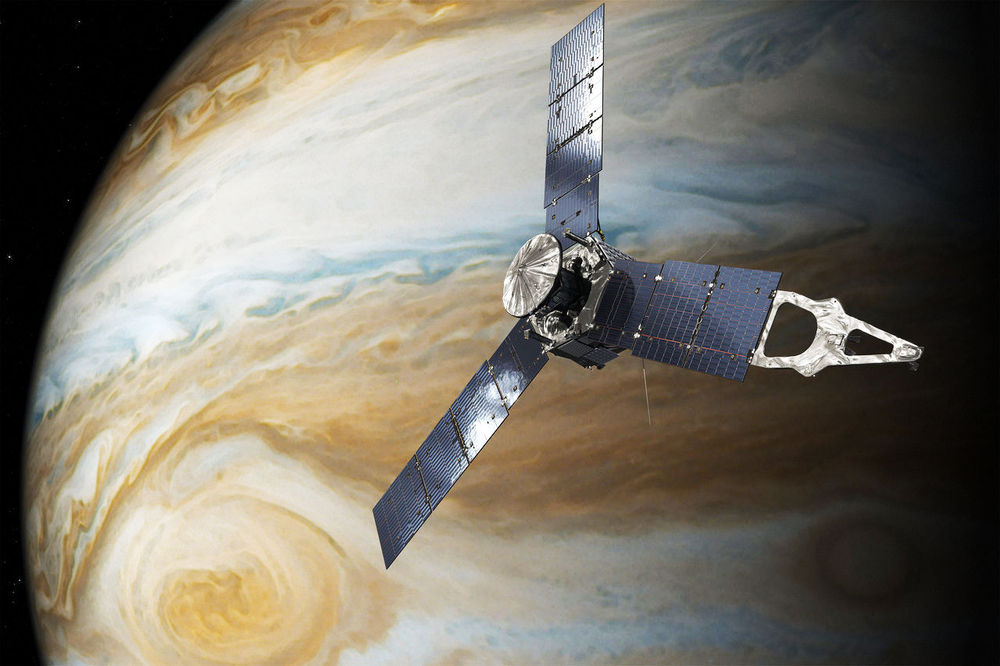
NASA’s Juno spacecraft breaks the record for farthest distance traveled using solar power. Juno travels at a whopping 165,000 miles per hour and will arrive at Jupiter on July 4 after a 1.7 billion mile journey. Juno will orbit closer to Jupiter than any other spacecraft, providing the highest resolution images ever taken of the planet. Pretty awesome for a smaller budget, solar-powered science robot!
It is very common to use solar-powered space-crafts, but not for this amount of long distance out into space. The amount of sunlight reached at Jupiter is 25 times lower than what we get here on Earth. This wouldn’t usually be enough energy to power a spacecraft like Juno, but it is due to an improved design.
The first and only other spacecraft to orbit Jupiter was Galileo. It was launched in 1989 and its solar panel efficiency was too low to work in deep space. About only 12 percent of the sunlight's energy got turned into electricity. But when Juno was designed in 2003 by Lockheed Martin, the efficiency had more than doubled to 28 percent. It was just enough to make the first deep space mission powered only by minimal sunlight.
The design of Juno is pro on efficiency. It has three 30-foot solar array wings, with a total of 18,698 individual solar cells. They put out about 500 watts of power and it is more than enough to operate all the science instruments and keep the electronics warm.
Juno operates in a constant dance of charging and emptying the batteries. While it faces the sun it stocks up on solar power, and for the time it’s around the back of Jupiter, the batteries fully deplete while powering the instruments.
Juno has revolutionised how a deep space mission can operate. The future of space-crafts means that a life powered by the sun can become the new norm.
